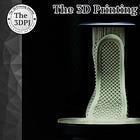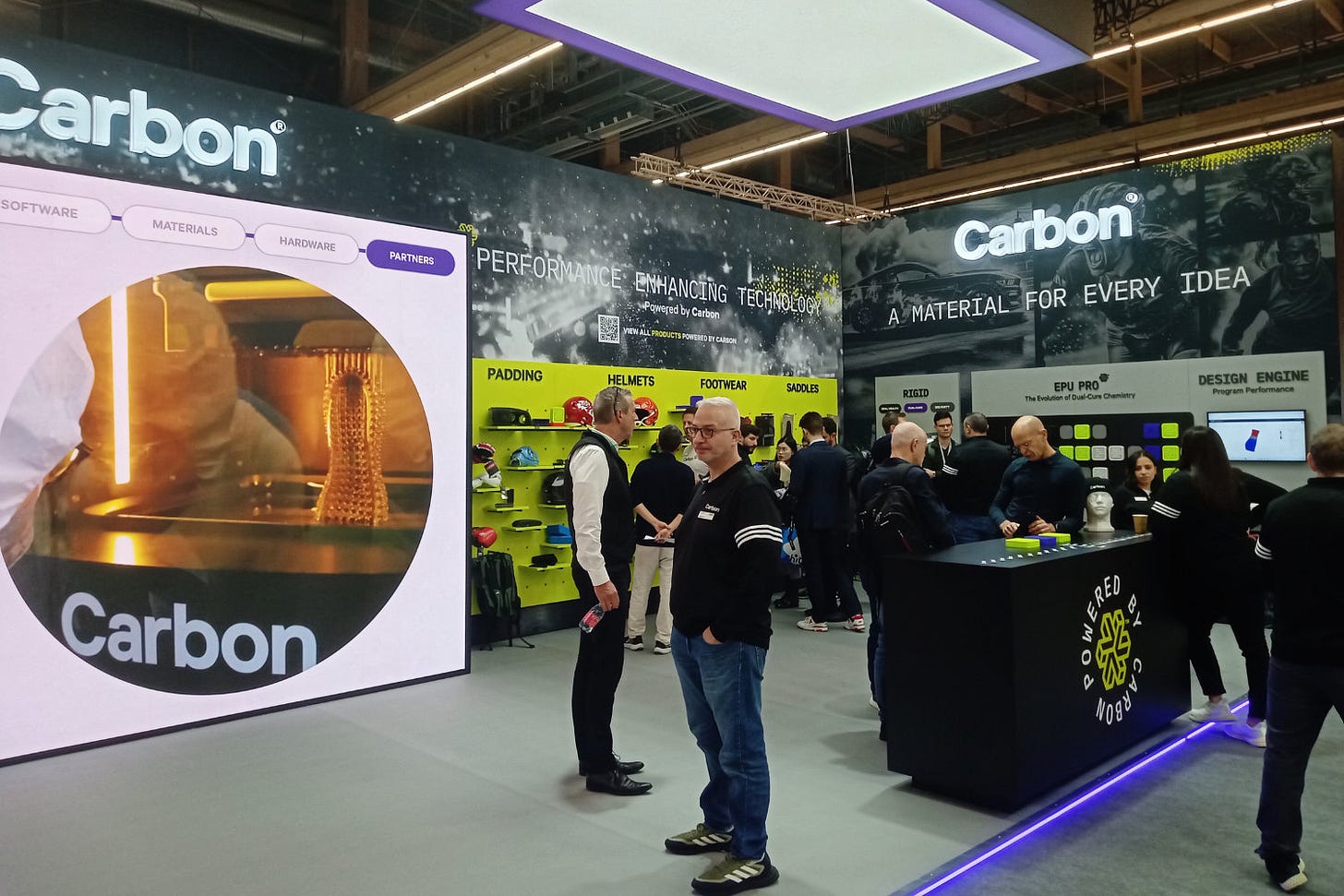An intriguing case of Carbon
The Atomic Layers: S8E8 (00214)
Atomic Layer of the Day:
We all remember that video:
It felt a bit like watching a man land on the moon (which some claim never happened) or the Curiosity rover landing on Mars (which, according to some, actually took place in Arizona).
What we saw back then was unreal—3D printing parts in minutes instead of the usual hours.
Carbon was a true revolution. It was supposed to finally transition 3D printing from rapid prototyping to rapid manufacturing.
It was also one of the key drivers of the second wave of additive manufacturing’s popularity, which, alongside Carbon, propelled companies like Desktop Metal, Markforged, Nexa3D, Velo3D, Fast Radius, SmileDirectClub, and many others to the top.
In mid-2017, Carbon announced a partnership with Adidas for the famous Futurecraft 4D project and later introduced its SpeedCell system, a comprehensive industrial solution that incorporated post-processing capabilities.
In December of that year, the company completed its Series D funding round, raising $200 million and reaching a valuation of $1.5 billion. Carbon became the second unicorn in the 3D printing sector that year, following Desktop Metal’s earlier achievement.
Carbon was one of the new cornerstones of the AM industry. But today, it no longer is.
While the company is far from the struggles of Nexa3D or Desktop Metal—not to mention Fast Radius or SmileDirectClub—it's hard not to say that things were supposed to turn out differently…
Carbon’s case is weird. Curious. Intriguing. The company seems to be following its own unique path, but it's difficult to see the genius that was once suggested by the initial Eiffel video or the $1.5 billion valuation.
A few days ago, 3DPrint.com published an interview with Phil DeSimone, CEO of Carbon, in which he discussed the company’s current situation.
As you may know, Carbon has never sold its 3D printers but instead offered them through a Pay-As-You-Print (PAYP) model. This means that customers don’t purchase the printers outright but instead pay based on the number of prints or the machine’s operating time.
At the same time, the company has engaged in various large-scale projects with industries and companies far removed from traditional 3D printing applications—Adidas being a prime example.
Currently, Carbon is focusing on delivering complete solutions for specific applications. In the interview with Matt Kremenetsky, DeSimone emphasized that the company’s strategy is based on providing value through solutions, rather than simply promoting 3D printing technology itself.
Carbon is concentrating on three primary application areas: orthodontics (aligners), dentistry, and replacing traditional materials such as foam. DeSimone calls this the “war on foam,” highlighting how 3D printing enables the creation of intricate lattice structures that can replace foam in various products—from footwear to sports helmets to bicycle saddles.
A prime example of this strategy is the bicycle saddles Carbon produces in collaboration with Specialized. 3D printing allows for over 20 compression zones within a single piece, resulting in exceptional comfort and performance. DeSimone believes that Carbon could capture up to 10% of the global bicycle saddle market, representing a significant revenue opportunity.
DeSimone stresses that building trust by delivering valuable solutions is the key to success, rather than just selling 3D printers. Carbon is focusing on deeply integrating into select markets, forming credible partnerships, and providing products that offer a real competitive advantage for its customers.
This aligns with a trend observed over the past few years, which became particularly evident during last year’s Formnext trade show. Carbon is clearly evolving from a 3D printer manufacturer to a company specializing in delivering fully developed solutions for specific applications.
Since Carbon is not a publicly traded company, we don’t have access to its financials, so we don’t know if this strategy is working?
What we do know is that this is a significant shift from 2015. The next three years will reveal where this evolution leads.
Atomic Layer from the Past:
03-08-2022: Desktop Metal introduced a new line of metal 3D printers, the X-Series.
Join AM World Map and fill your country or region with Additive Manufacturing!
News & Gossip:
Boston-based RLP introduced the Levity 3D printer, pioneering Gravity Free Manufacturing. This system prints parts in a reusable gel, eliminating supports, post-processing, and waste. The technology enables intricate geometries and multi-material prints with exceptional accuracy. Levity will debute at RAPID + TCT, with shipping in 2026.
America Makes and NCDMM have announced a $1.1M open project call funded by OSD(R&E) to enhance additive manufacturing interoperability between the US DoD and UK MoD. The AAMI Program focuses on L-PBF for critical parts, addressing qualification challenges, supply chain integration, and international collaboration for a resilient Defense Industrial Base.
ICON, in partnership with Michael Hsu Office of Architecture and Catellus, will build 12 two-story 3D-printed homes in Austin’s Mueller community, breaking ground in 2025. Ranging from 650 to 2,400 sq. ft., homes will start in the mid-$300Ks. This marks ICON’s first Austin homes for sale since 2021.





